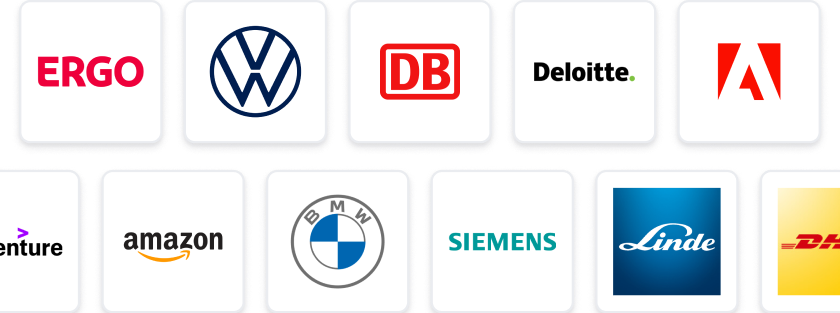At a Glance
- Tasks: Create user-friendly designs and prototypes for ANSYS products.
- Company: Join ANSYS, a leader in engineering simulation software.
- Benefits: Enjoy flexible work options and a creative environment.
- Why this job: Be part of an innovative team shaping user experiences with cutting-edge technology.
- Qualifications: BS/BA in relevant fields with 2 years of experience required.
- Other info: Familiarity with design tools like Figma and Adobe is essential.
The predicted salary is between 28800 - 48000 £ per year.
The User Experience Designer II creates easy and delightful experiences for users interacting with ANSYS products and services. The UX designer assesses the functional and content requirements of a product, develops storyboards, creates wireframes and task flows based on user needs, and produces visually detailed mockups. A passion for visual design and familiarity with UI trends and technologies are essential in this role, enabling the UX designer to bring fresh and innovative ideas to a project. This is an intermediate role, heavily focused on content production and communication.
Key Duties and Responsibilities:
- Designs, develops, and evaluates cutting-edge user interfaces with increased independence.
- Reviews UX artifacts created by other UX team members.
- Utilizes prototyping tools and UX toolkits.
- May create, review, and manage submissions to development code streams with high quality.
- Creates and delivers usability studies.
- Communicates design rationale across product creation disciplines and personnel.
- Records usability/UX problems with clear explanations and recommendations for improvement.
- Works closely with product managers, development teams, and other designers.
Minimum Education/Certification Requirements and Experience:
- BS or BA in Human-Computer Interaction, Design Engineering, or Industrial Design with 2 years’ experience or MS.
- Experience with Design tools such as Figma, Adobe tools such as Photoshop / Illustrator and Computer Aided Design (CAD)/Computer Aided Engineering (CAE) in any form.
Preferred Qualifications and Skills:
- Certificate in HCI.
- Particular Experience with Adobe Creative Suite.
- Modeling and simulation applications.
- UX design and collaboration tools.
- Tools & technologies for UI implementation.
- Screen-capture/editing/video-editing tools.
Ability to:
- Smoothly iterate on designs, taking direction, adjusting, and re-focusing towards a converged design.
- Organize deliverables for future reflection and current investigations.
- Communicate succinctly and professionally via email, chat, remote meetings, usability evaluations, etc.
- Prototype rapidly using any tools available.
User Experience Designer employer: Ansys
Contact Detail:
Ansys Recruiting Team
StudySmarter Expert Advice 🤫
We think this is how you could land User Experience Designer
✨Tip Number 1
Familiarise yourself with the latest UX design trends and tools, especially Figma and Adobe Creative Suite. Being well-versed in these tools will not only enhance your portfolio but also demonstrate your commitment to staying current in the field.
✨Tip Number 2
Build a strong portfolio showcasing your best work, particularly projects that highlight your ability to create wireframes, mockups, and usability studies. Make sure to include case studies that explain your design rationale and the impact of your designs.
✨Tip Number 3
Network with other UX professionals and engage in online communities or local meetups. This can provide valuable insights into the industry and may even lead to referrals or job opportunities at companies like us.
✨Tip Number 4
Prepare for interviews by practising how to communicate your design process clearly and effectively. Be ready to discuss your previous projects, the challenges you faced, and how you collaborated with cross-functional teams, as this is crucial for the role.
We think you need these skills to ace User Experience Designer
Some tips for your application 🫡
Understand the Role: Before applying, make sure you fully understand the responsibilities and requirements of the User Experience Designer II position. Familiarise yourself with the tools mentioned, such as Figma and Adobe Creative Suite, and think about how your experience aligns with these.
Tailor Your CV: Customise your CV to highlight relevant experience in UX design, particularly focusing on your proficiency with design tools and any projects that showcase your ability to create user-friendly interfaces. Mention specific examples where you've successfully communicated design rationale or conducted usability studies.
Craft a Compelling Cover Letter: Write a cover letter that not only expresses your passion for UX design but also demonstrates your understanding of the company’s products and services. Discuss how your skills and experiences can contribute to creating delightful user experiences at ANSYS.
Showcase Your Portfolio: Include a link to your portfolio that showcases your best work in UX design. Make sure it highlights your process, from storyboarding to wireframing and final mockups. This will give the hiring team insight into your design thinking and problem-solving abilities.
How to prepare for a job interview at Ansys
✨Showcase Your Design Process
Be prepared to discuss your design process in detail. Highlight how you assess user needs, create wireframes, and develop mockups. Use specific examples from your past work to illustrate your approach and the impact it had on user experience.
✨Familiarise Yourself with Tools
Make sure you're well-versed in the design tools mentioned in the job description, such as Figma and Adobe Creative Suite. During the interview, mention any projects where you've successfully used these tools to create user interfaces or prototypes.
✨Communicate Clearly
Since communication is key in this role, practice articulating your design rationale clearly and succinctly. Be ready to explain your decisions and how they align with user needs and business goals, as well as how you collaborate with other team members.
✨Prepare for Usability Discussions
Anticipate questions about usability studies and how you've handled UX problems in the past. Be ready to share examples of usability evaluations you've conducted and the recommendations you made based on your findings.
